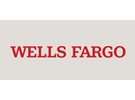It was hard to miss the consolidation of companies within the fresh produce industry in 2023 and it could be an industry development that continues into 2024.
First, a word on why consolidation happens within any industry. “Companies act based on market conditions, needs and demand. Larger enterprises are also opportunistic, so consolidation is always going to be part of the business,” says Brad Rubin, Wells Fargo Agri-Food Institute sector manager. In other words, large players make acquisition decisions to grow top-line revenue where they want to become competitors in a space. “This is often cheaper than launching a new line of business,” adds Rubin.
For growers/shippers, exploding input costs that have been seen over the past few years are a factor as well. As input and development costs increase, companies will look to acquire businesses in need of help to grow. “Larger companies can reduce costs using leverage and economies of scale. This can often turn non-profitable businesses into profitable segments,” says Rubin.
Produce industry consolidation
While consolidation is happening across all industries, produce is a fragmented and diverse industry. “Companies with high input costs weigh the benefit of continued farming versus selling; companies that are not well diversified are targets for larger companies that want to add to their supply concentration and further diversify their portfolio,” says Rubin.
In turn, he says larger companies and brands gain preference with retailers by offering that newly acquired diverse product portfolio and year-round supply. “Retailers look at these qualities as a competitive advantage. More throughput is good for everyone,” he says. “Any risk for monopoly in the produce space is low as there are numerous growers and importers in constant competition. Prices have generally risen, but most have stabilized with plenty of supply.”
So, retailers want to work with packers or distributors that can provide year-round supply.
Looking ahead, industry consolidation looks to continue. “The larger the company, the company operates more efficiently through economies of scale and will further have leverage to be more competitive in a price-sensitive market,” says Rubin.
 For more information:
For more information:
Sarah Hatch
Wells Fargo
sarah.hatch@wellsfargo.com
https://www.wellsfargo.com/
